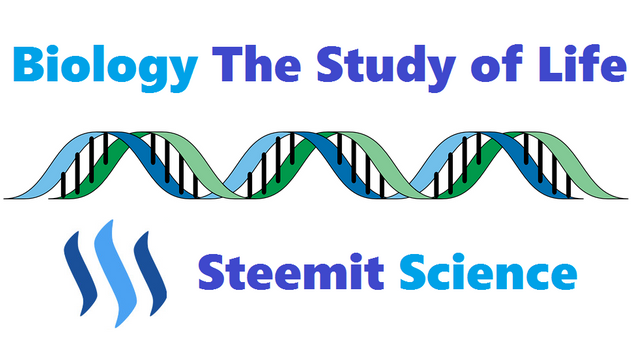
This post will be taking a final look at the concept of information and evolution in biology.
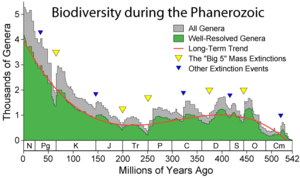
Returning to the question of how an original, primordial life form might have given rise to the enormously complex biodiversity observed on the planet today. Drawing on background covered earlier in the series and anticipating material to be discussed later, the post provides a brief tour of the major events that have occurred in the evolution of life on Earth, including the evolution of complex cells and the evolution of multicellular organisms, suggesting how these events may have contributed to the patterns of life we see today.
Darwin’s view of descent with modification led him to the conclusion that there existed in the remote past an organism that is the universal common ancestor to all life.
The information encoded in that very first DNA still exists in some form today, even though it has been copied and modified an unfathomable number of times, and could, theoretically, be traced all the way back.
The first living organism must have arisen sometime between 3.9 and 3.5 billion years ago, based on geological and fossil evidence.

The oldest fossil organisms are around 3.5 billion years old; these organisms already resemble modern prokaryotes, suggesting that life evolved much earlier. The first entity we might call “living” was a single cell with a membrane, an RNA-based genetic system, and the ability to extract energy and nutrients by breaking down organic molecules it absorbed. After RNA was established, DNA took over the information-storing role. The major effects of natural selection on such an organism must have been to refine the information-storing mechanism and to establish cooperation among different kinds of biomolecules.
The fossil record makes clear that early Earth was teeming with prokaryotic cells following the existence of the first cell.
It is also clear that life existed only as prokaryotic cells for at least 1.5 billion years. The two major lineages of prokaryotes, bacteria and archaea, diverged before the evolution of eukaryotic cells. The differences between bacteria and archaea are subtle and mostly involve biochemical properties. The vast majority of prokaryotes are bacteria, and archaea now tend to live in extreme environments, such as hot springs or extremely salty water. Early prokaryotes also evolved an enormous variety of biochemical (metabolic) pathways with which to capture, store, and use energy. This was basically the evolution of the proteins needed for these pathways to work. Nearly all of the metabolic pathways in modern cells evolved before eukaryotes even appeared.
A transforming event in the history of life was the evolution of biochemical pathways that captured energy from sunlight and stored it in simple sugars, a process known as photosynthesis.
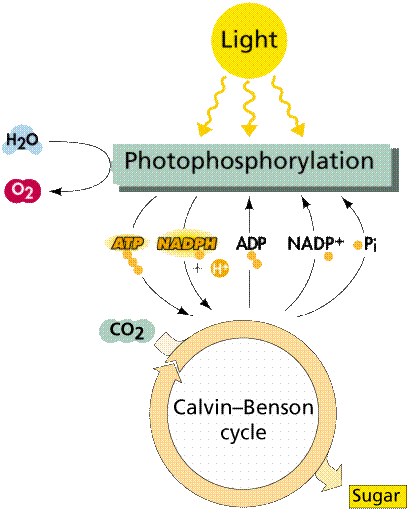
Because photosynthesis tapped into an endless source of energy, it was an enormously successful adaptation. The most important thing about photosynthesis in the present context is that the most efficient photosynthetic pathways generate oxygen as a waste product. Over the course of about 1 billion years, this increased Earth’s atmospheric oxygen from almost zero to nearly modern levels. Oxygen is highly reactive and tends to break down organic molecules. Increasing oxygen levels caused many organisms that had originally evolved in the absence of oxygen to go extinct.
Some groups of organisms adapted to increased oxygen levels;
the most notable adaptation was the evolution of biochemical pathways of cellular respiration, which use oxygen to extract the energy stored in organic molecules much more efficiently. Cells had essentially found both a new source of fuel and a better way to burn the fuel they had. Another positive result of oxygen accumulation was the eventual development of an ozone layer in the upper atmosphere. Ozone, a modified form of oxygen, absorbs damaging UV radiation from the Sun and permitted organisms to live on land for the first time.
Eukaryotic cells first arose about 2.1 billion years ago from an archaean ancestor.
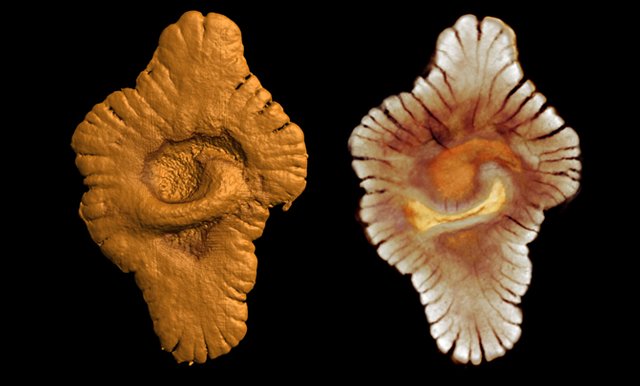
2-Billion-Year-Old Fossils May Be Earliest Known Multicellular Life
At some point in history, cells began to “eat” each other by engulfing other cells in their membranes (endocytosis). As competition for resources increased, endocytosis began to serve as an efficient way to gain many resources at once.
The endosymbiotic theory of eukaryotic evolution suggests that at least two important organelles developed from endocytosis that resulted not in cell death, but in a symbiotic relationship between the engulfing cell and the engulfed cell.
Before this could happen, however, cell membranes had to become more flexible, which also facilitated the evolution of other membrane-bound chambers within existing cells. This development may have given rise to the eukaryotic nucleus, which enabled increasingly large and complex genomes to evolve.
For an engulfed cell to evolve into an organelle, there must have been a selective advantage for both of the original cells. The endosymbiotic theory suggests that the advantage to the engulfed cell was the nutrient-rich environment of the inside of the engulfing cell, while the engulfing cell benefited from the engulfed cell’s more efficient metabolic pathways.
Mitochondria and chloroplasts are organelles specialized for cellular respiration and photosynthesis, respectively, and likely to have arisen as described by the endosymbiotic theory.
Three pieces of evidence support this theory: Mitochondria and chloroplasts share structural features with prokaryotes; each has a separate genome and reproduces separately from its host cell; and both are bacteria, while eukaryotes evolved from archaea.
Though they carry their own genes, mitochondria and chloroplasts have evolved along with their hosts and could not now survive on their own.
Although archaea and bacteria are separate lineages, the evolution of eukaryotic cells recombined them in an integrative way.
The evolution of eukaryotic cells around 2 billion years ago caused an explosion of diversification, and evolutionary change sped up, eventually creating multicellular organisms. Eukaryotic cells diversified into a range of single-celled protists, which are abundant today. Eukaryotic cells, however, also gave rise to the evolution of multicellular organisms. Phylogenetic analysis suggests that the first multicellular organism arose perhaps 1.5 billion years ago, but the first potential fossil found is 1.2 billion years old. More convincing multicellular fossils do not appear until about 600 million years ago.
Multicellularity permitted a huge range of diversification as a result of cellular specialization.
Selective pressures could act only on parts of an organism, and specialized cells could become very well adapted to their tasks. Multicellularity also allowed large, complex organisms to develop. Organisms that were large enough could develop internal environments that enabled them to survive in harsh conditions and external adaptations to those conditions. The most significant consequence of multicellularity was the development of cells specialized for sexual reproduction and the associated process of meiosis. Sexual reproduction introduced a much greater amount of genetic variation into populations of organisms.
If we reduced the entire history of the Earth to a single calendar month, multicellular organisms would have appeared around the 24th day.
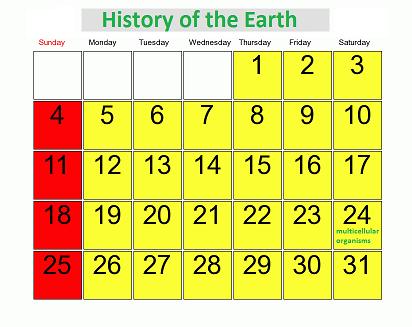
From that point, life evolved rapidly. Once specialized cells and features arose, however, mechanisms had to develop to protect them from the wide range of new conditions in which life could exist.
A couple questions to discuss in comments:
- Why can life no longer spontaneously arise on the modern Earth, whereas it could on the primitive Earth?
- How does the idea that all organisms today, including ourselves, share genetic continuity with the first “organism” that ever existed on the planet change your view of life? Your view of your own existence?
END PART 24
BIOLOGY THE STUDY OF LIFE:
PART 1 INTRODUCTION
PART 2 WHAT IS LIFE
PART 3 ORIGIN OF LIFE
PART 4 CELL TO ORGANISM
PART 5 PROTEINS
PART 6 CODE OF LIFE
PART 7 DOUBLE HELIX
PART 8 REPLICATING DNA
PART 9 CENTRAL DOGMA
PART 10 GENETIC CODE
PART 11 DNA TO RNA
PART 12 RNA TO PROTEINS
PART 13 MISTAKES HAPPEN
PART 14 WHEN CELLS DIVIDE
PART 15 MENDEL'S PEA PLANTS
PART 16 SEX AND VARIATION
PART 17 GENES AND CHROMOSOMES
PART 18 CHARLES DARWIN ON THE ORIGIN OF SPECIES
PART 19 NATURAL SELECTION
PART 20 DARWIN VS MENDEL
PART 21 MECHANICS OF EVOLUTIONARY CHANGE
PART 22 WHAT ARE SPECIES AND HOW DO NEW ONES ARISE
PART 23 ORIGINS OF NEW SPECIES
PART 24 RECONSTRUCTING EVOLUTION THROUGH PHYLOGENTIC SYSTEMATICS
PART 25 HISTORY OF LIFE, THE CONCLUSION
Image Credits -
https://upload.wikimedia.org/wikipedia/commons/thumb/a/a5/Phanerozoic_Biodiversity.png/300px-Phanerozoic_Biodiversity.png
https://i.guim.co.uk/img/media/a300e5e15166d62f168e35f1eb92e2e2b8640d09/0_0_999_1198/master/999.jpg?w=1225&q=55&auto=format&usm=12&fit=max&s=2eb002d6c690adde2e114abfe2bf4fe7
https://www2.estrellamountain.edu/faculty/farabee/BIOBK/psoverview.gif
https://www.wired.com/images_blogs/wiredscience/2010/06/Gabon3_3D_B.jpg
http://printablecalendar2016free.com/july-1999-calendar-month/
Bird [Giphy](https://giphy.com/gifs/blue-5lDik5jPpRw2Y)
shah

 or
or  @pjheinz
@pjheinzCreating these educational posts requires dedicating many hours each day to research, write, source images, and publish the content. If you enjoy this material on Steemit please decide to show your support by donating.

BTC: 1JQWNxziArfaCtxsP3tUQ4VSTBY9jresmt 



I guess new life can spontaneously arise. Unless new life found an environment in which they could thrive that would not have any predators or competing organisms, they would die out very quickly due to losing out to more specialised organisms.
Downvoting a post can decrease pending rewards and make it less visible. Common reasons:
Submit
why is todays secret word shah?
Downvoting a post can decrease pending rewards and make it less visible. Common reasons:
Submit
Unsure, you would have to ask @contentjunkie or @corky.
Downvoting a post can decrease pending rewards and make it less visible. Common reasons:
Submit
Well actually the ancestral organism that split into modern archaea and eukaryotes, would not have been an archaea. There is thought to be a common ancestor between the two domains though. :)
Good on you for mentioning archaea though. They don't get nearly enough love from science in general.
Downvoting a post can decrease pending rewards and make it less visible. Common reasons:
Submit
Downvoting a post can decrease pending rewards and make it less visible. Common reasons:
Submit
Downvoting a post can decrease pending rewards and make it less visible. Common reasons:
Submit
Downvoting a post can decrease pending rewards and make it less visible. Common reasons:
Submit
Downvoting a post can decrease pending rewards and make it less visible. Common reasons:
Submit
Downvoting a post can decrease pending rewards and make it less visible. Common reasons:
Submit
Downvoting a post can decrease pending rewards and make it less visible. Common reasons:
Submit
Downvoting a post can decrease pending rewards and make it less visible. Common reasons:
Submit
Downvoting a post can decrease pending rewards and make it less visible. Common reasons:
Submit
Downvoting a post can decrease pending rewards and make it less visible. Common reasons:
Submit
Downvoting a post can decrease pending rewards and make it less visible. Common reasons:
Submit
Downvoting a post can decrease pending rewards and make it less visible. Common reasons:
Submit
Downvoting a post can decrease pending rewards and make it less visible. Common reasons:
Submit
Downvoting a post can decrease pending rewards and make it less visible. Common reasons:
Submit
Downvoting a post can decrease pending rewards and make it less visible. Common reasons:
Submit
Downvoting a post can decrease pending rewards and make it less visible. Common reasons:
Submit
Downvoting a post can decrease pending rewards and make it less visible. Common reasons:
Submit
Downvoting a post can decrease pending rewards and make it less visible. Common reasons:
Submit
Downvoting a post can decrease pending rewards and make it less visible. Common reasons:
Submit
Downvoting a post can decrease pending rewards and make it less visible. Common reasons:
Submit
Downvoting a post can decrease pending rewards and make it less visible. Common reasons:
Submit
Downvoting a post can decrease pending rewards and make it less visible. Common reasons:
Submit
Downvoting a post can decrease pending rewards and make it less visible. Common reasons:
Submit
Downvoting a post can decrease pending rewards and make it less visible. Common reasons:
Submit
Downvoting a post can decrease pending rewards and make it less visible. Common reasons:
Submit
Downvoting a post can decrease pending rewards and make it less visible. Common reasons:
Submit
Downvoting a post can decrease pending rewards and make it less visible. Common reasons:
Submit
Downvoting a post can decrease pending rewards and make it less visible. Common reasons:
Submit
Downvoting a post can decrease pending rewards and make it less visible. Common reasons:
Submit
Downvoting a post can decrease pending rewards and make it less visible. Common reasons:
Submit
Downvoting a post can decrease pending rewards and make it less visible. Common reasons:
Submit
Downvoting a post can decrease pending rewards and make it less visible. Common reasons:
Submit
Downvoting a post can decrease pending rewards and make it less visible. Common reasons:
Submit
Downvoting a post can decrease pending rewards and make it less visible. Common reasons:
Submit
Downvoting a post can decrease pending rewards and make it less visible. Common reasons:
Submit
Downvoting a post can decrease pending rewards and make it less visible. Common reasons:
Submit
Downvoting a post can decrease pending rewards and make it less visible. Common reasons:
Submit
Downvoting a post can decrease pending rewards and make it less visible. Common reasons:
Submit
Downvoting a post can decrease pending rewards and make it less visible. Common reasons:
Submit
Downvoting a post can decrease pending rewards and make it less visible. Common reasons:
Submit
Downvoting a post can decrease pending rewards and make it less visible. Common reasons:
Submit